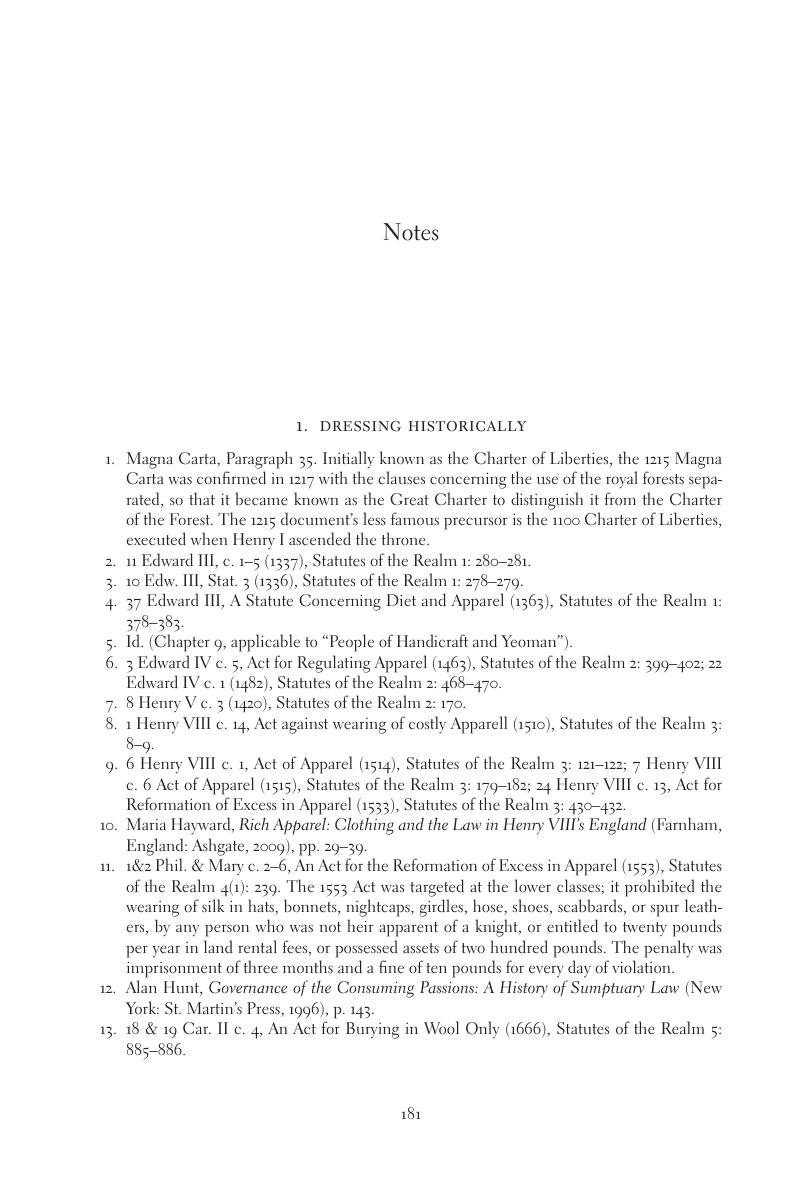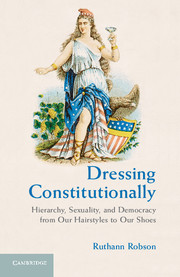Notes
Published online by Cambridge University Press: 05 July 2013
Summary

- Type
- Chapter
- Information
- Dressing ConstitutionallyHierarchy, Sexuality, and Democracy from our Hairstyles to our Shoes, pp. 181 - 226Publisher: Cambridge University PressPrint publication year: 2013



